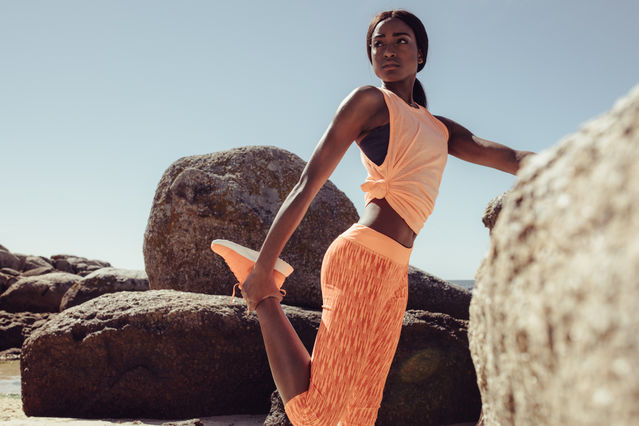Media
Both the Size and the Sexiness of the Models We See Matter
Diverse size representations in media could reduce body dissatisfaction.
Posted September 28, 2018

I don’t get a lot of catalogs in the mail anymore and I recycle most of the ones I get without looking at them, except for the Athleta catalog. Most of their clothing is out of my price range, but I don’t really flip through it to check out the athleisure wear. I like to see the scenery and the models. The catalog always features strong, fit looking women—often with awesome, enviable muscles—doing sporty things in pretty places. I usually feel inspired to exercise, as opposed to feeling sorry that I don’t have longer legs or bigger breasts (sentiments that may creep into my consciousness if I was looking at, say, a Victoria’s Secret catalog).
After just having finished looking through my latest, fall Athleta catalog today (yes, with a busy life this doesn’t tend to happen all in one sitting), I happened to run across a new study from the journal Sex Roles that examines how different size media models make us feel. I wondered if I was the only one who seemed to benefit from the introduction of some degree of body diversity in the media. Researcher Silvia Moreno-Domínguez and her colleagues asked 145 Spanish women to view either thin or overweight models. They found that thin models seemed to evoke upward social comparisons, or comparisons to an ideal that was “above” participants’ current self-perceptions. The result: higher reports of body dissatisfaction and anxiety. However, when participants were asked to view images of overweight women, it seems that downward social comparisons were made. In other words, the images viewed represented a goal that was “below” participants self-perceptions. What seemed to result was decreases in reports of participants’ body dissatisfaction (however, no effect was apparent on anxiety). Some participants were explicitly asked to compare themselves to the images they viewed whereas others were not, but this didn’t seem to alter the responses. It seems likely that women are so accustomed to and likely to make these sorts of comparisons automatically, that a bit of prompting from a researcher doesn’t modify the effect.
The authors of the study suggest that body size diversity in the media could help to reduce body dissatisfaction by “neutralizing” some of the detrimental effects of the overrepresentation of extremely thin models in the media. Most body image researchers I know would love to see more “real women” in the media. Heck, most “real women” I know would like to see more real women in the media! But, women’s bodies come in many shapes and sizes. Most of us would not neatly fit into just the category of “thin” or “overweight”—we may be top-heavy or pear-shaped or a million other varieties.
And, what of my own experience in terms of athletic inspiration? Another study by Linder and Daniels, also published in Sex Roles in 2018, may further help to explain some of what may be going on. Their research presented participants with images of athletes; either sexualized images (think Serena Williams in a skimpy bikini) or “sporty, performance images” (Serena in tennis attire on the court). Both men and women responded to sexualized images by self-objectifying. In other words, viewing overtly sexual images may have led to a sort of upper social comparison, making participants think about themselves in terms of their appearance and how it may be lacking. In contrast, the sporty images led participants to be more likely to describe themselves in terms of their physicality or functionality.
So, it seems that Athleta may have the best of all worlds: sporty images plus models of varying sizes. Of course, people will argue that even Athleta could do better in terms of presenting diversity. No doubt about it, most of us would like to see women of more sizes and shapes and colors in the media. But, as a result of my viewing: not only do I feel ready to go for a run (in some exotic locale), but I feel satisfied with doing so in my current body. For now, I’ll take that.


